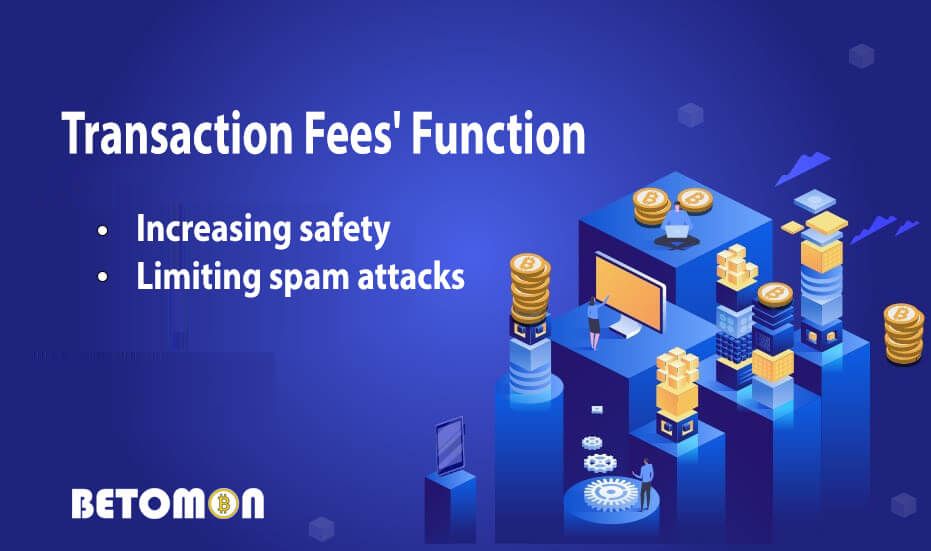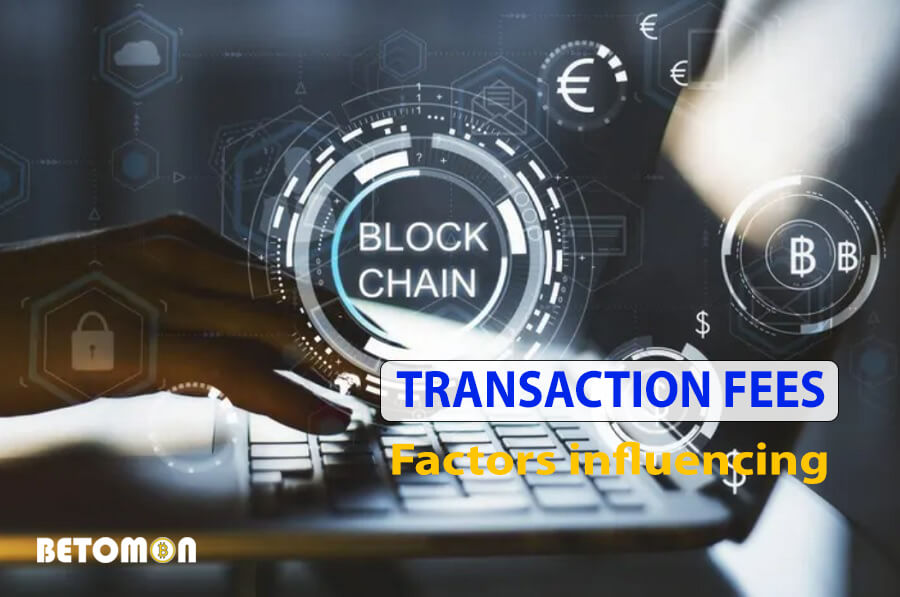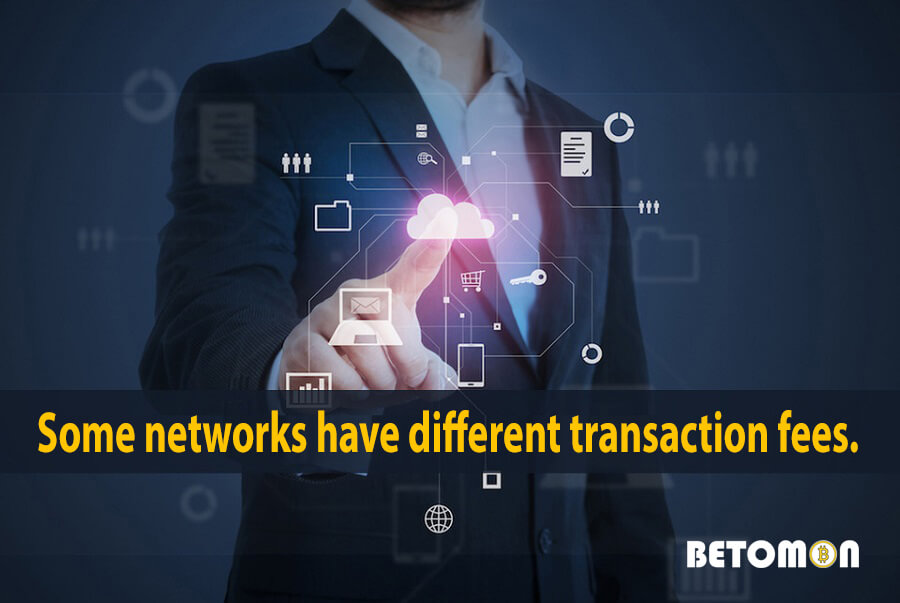The performance and growth of the ecosystem as a whole are directly impacted by the differences in transaction costs between different blockchains
What are transaction fees?
Blockchain transaction fees (also known as mining fees) are the fees users pay to miners/validators when transferring crypto assets and are typically denominated in the native token of the blockchain. Activities requiring fees include sending, buying, selling, borrowing crypto, and more. These fees are applied similarly to transfer fees in traditional banking systems.
Transaction fees can fluctuate depending on network activity and developer regulations. Fees typically rise when the network records a large volume of transactions and decrease during times of low transaction activity.

Blockchain fees are applied to reduce spam transactions, helping the platform operate stably and prevent security risks. High transaction fees are one of the factors hindering blockchain development, but low fees can pose security risks.
The fees users pay to miners and validators when transferring cryptocurrency assets are called blockchain transaction fees (mining fees). These fees are usually expressed in the native token of the blockchain. Fee-based activities include lending, purchasing, selling, and sending cryptocurrency, and more. These charges are assessed in a manner akin to how transfer costs are in conventional banking systems.
Depending on developer policies and network activity, transaction costs may change. In general, fees increase during periods of high transaction activity on the network and decrease during periods of low transaction activity.
Blockchain fees are used to lessen spam transactions, which improves platform stability and lowers security threats. Blockchain development is hampered by high transaction fees, yet low fees can lead to security issues.
Technically, the main transaction fees on blockchain are gas fees. But gas costs are meant for networks that can run smart contracts and have only been employed since Ethereum’s founding.
>>> What is TradingView? How to use TradingView
Transaction fees’ function
Increasing safety
A decentralized node network powers the majority of blockchain networks, and node operators are essential to transaction verification. Transaction fees are utilized as enticing rewards for miners and validators in order to encourage user engagement and fortify the blockchain.
As a thank you for their assistance in keeping the network stable, participants may get a piece of the charge. The blockchain gets increasingly safe and secure as more users participate in the verification process. Furthermore, several blockchains incorporate revenue-sharing schemes for users who possess the native tokens of the network.

Limiting spam attacks
Putting transaction fees is one way to reduce deliberate hacker behaviors, such flooding the network with transactions to bog it down, delay verification, and expose it to network intrusions. Due to the high cost of executing successful attacks on networks with high fees and the generally low success rate, hackers frequently target blockchains with low fees in an effort to lower the cost of their attacks.
Hackers previously launched a spam campaign in May 2021 against Polygon, a network that is well-known for transaction costs of about 0.02 MATIC (0.01 USD). Over a 120-day period, the attacker completed 8 million transactions every day and profited from price arbitrage with 218.5 ETH (approximately 693 thousand USD). In comparison to the initial 14 ETH investment, this was a noteworthy profit.
Due to this incident, Polygon raised average fees to about 0.5 USD, and many other blockchains with low fees were forced to review their cost structures
Factors influencing transaction fees
The blockchain development team’s mechanism and vision are the primary determinants of transaction costs. Every blockchain has a unique cost structure and set of uses.
Many blockchains employ far higher transaction fees than typical, in addition to logical methods to draw users. To minimize risks, consumers should thoroughly review the costs before approving any transactions.
Transaction fees for Bitcoin are typically distributed to miners that engaging in the block verification process. When users pay a fair charge and gnore transactions that have no fees, most miners give priority to those transactions transferring Bitcoin.

Bitcoin transaction fees are computed using the transaction size in bytes rather than the transaction amount. The minimum charge may go up in situations with a lot of traffic and demand for large transactions.
Because transaction costs occasionally surpass the transaction value, Bitcoin is less appropriate for regular financial transactions due to its frequent charge rises.
Some factors that may affect transaction fees include:
- Network congestion: Many transactions conducted in close succession clog the network and increase verification times. Here, consumers have to pay additional costs in order to receive processing priority.
- Increased transaction demand: Supply and demand factors, particularly when demand outpaces supply, lead to an increase in transaction costs. Traders with experience can gauge market circumstances and pick the ideal moment to take advantage of cheaper fees.
Some networks have different transaction fees.
Since it is the world’s first blockchain, Bitcoin has helped to establish guidelines for transaction fees for next generations. Due to its transaction size-based fee structure, the Bitcoin network is rarely utilized for routine payments and can cause large variations in transaction fees.
Ethereum’s use of “gas fees,” a feature of blockchains with smart contracts, introduces a novel approach and idea. The gas price, which is the highest amount of gas users are ready to pay to complete a transaction, and the gas limit, which is the price users are willing to pay for a single unit of gas, are the two criteria that influence transaction costs on Ethereum.
Ethereum is frequently criticized for abnormally high transaction costs. Developers provide numerous solutions to reduce fees and improve transaction times for this reason, among other reasons.

In terms of transaction fees, Tron is one of the top platforms. The two platforms that generated the most transaction fees in the market during the first three quarters of 2023 were Ethereum and Tron. Of those, 31% were Tron and 57% were Ethereum. Tron recorded $282 million in transaction fees in an approximate six-month period.
BNB Smart Chain uses a Delegated Proof of Stake consensus mechanism and Paying fees according to the tasks of each transaction. Depending on the market price of BNB, the total transaction cost may go up or down. Because Gwei is a tiny denomination of BNB equal to 0.000000001 BNB, the cost structure of BSC is comparable to that of Ethereum. To prioritize transactions, users can adjust the price of gas.
The Proof of Stake consensus process used by Polygon and Solana, two blockchains with low fees that lower expenses and network energy consumption, make them interesting. Speedy transaction processing is made possible by Polygon’s Layer 2 scaling options.
Depending on the speed of the transaction, Polygon’s gas fees can be as little as 0.00008436 MATIC (0.0001 USD). Users can prioritize the system by paying more to expedite transactions.
Transactions are quick and affordable thanks to Solana’s high-throughput, effective consensus mechanism. There is minimal rivalry for block space on the network, which maintains a constant charge level. Solana has emerged as a popular option among the swiftly expanding blockchains for those looking for low-cost blockchain solutions.
As of February, Solana has the lowest transaction fees available on the market, ranging from $0.003 to $0.005 USD, according to a research from. Furthermore, customers have the option to prioritize transactions by paying an extra cost, which makes up roughly 40% of all network expenses
Users can consult the following average transaction fees for well-known blockchains as of April 28, which were gathered from Ycharts, Bscscan, Mempool, Solscan, and Polygonscan:
| Network | Transaction fee |
| Bitcoin | $6.966 |
| Ethereum | $9.483 |
| Tron | $1 to $3 |
| BNB Binance Chain | $0.1193 |
| Polygon | $0.01 |
| Solana | $0.03 – $0.05 |
Users were alarmed by the unexpected increase in Bitcoin network fees following the recent halving event. Network fees hit an all-time high of $128.45 USD on the day of the halving. High-priority transactions hit $170 USD, while average priority transactions brought in $146 USD.
With $81 million in total fees, the amount exceeded Ethereum by a factor of 24. Additionally, from $7.7 million USD the day before, this amount climbed dramatically. For approximately six days running, Bitcoin led Ethereum in transaction fees, averaging $17.8 million USD over the course of seven days.

The overall transaction fees dropped to $22.37 million USD on April 21, with the average cost falling to $34.8 USD. The hashprice, which measures how much a certain hashrate may yield to miners, also dropped after the halving, going from $182.98 USD to $81 USD per hash/day.
The transaction charge is $6.966 USD at the moment. Mempool data indicates that the following fees apply to each transaction group:
- No priority: 10 sat/vB (0.87 USD)
- Low priority: 18 sat/vB (1.57 USD)
- Medium priority: 19 sat/vB (1.66 USD)
- High priority: 19 sat/vB (1.66 USD)
Many investors think that Casey Rodarmor’s Runes Protocol debut is partially responsible for the unexpected spike in Bitcoin transaction costs. This new token standard, which is comparable to BRC20, has the potential to improve innovative applications within the Bitcoin ecosystem and lessen network congestion.
Transaction costs rose as users raced to produce rune-based memecoins in an effort to win rare satoshis. The average amount consumers had to pay was close to $800 USD, with 3,050 transactions executed in a block according to the network.
>>> What is private key? Difference between private key and public key
Ways to reduce transaction fees
When using blockchain platforms for transactions, transaction fees are an essential component. Users frequently have to take payments, even for exorbitant prices. Nonetheless, seasoned investors have numerous options to reduce the amount invested, boosting their chances of making a profit.

Sending transactions outside of “peak hours” will essentially save you money on fees because they go up during busy network times. Many users think that network high-fee times frequently occur during US business hours.
In addition, a lot of developers are searching for answers to the problem of transaction costs. To save money, customers currently give priority to adopting Ethereum’s Layer 2 scaling solutions and Bitcoin’s Lightning Network.
In conclusion,
A significant component of many cryptocurrency users’ investment strategies is transaction fees. Currently, users pay transaction fees on the majority of blockchains. Variations in transaction fees are also influenced by emerging patterns and new token specifications. Projects are always looking for innovative ways to solve problems with excessive fees while maintaining user safety due to the community’s growing demand.
Betomon is a website that reviews, analyzes and knowledge shares about safe and stable financial investment projects on the theme of crypto forex blockchain… Projects to make money online for free
Visit the website betomon.com or register to receive the latest information here.




